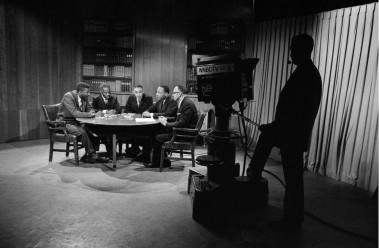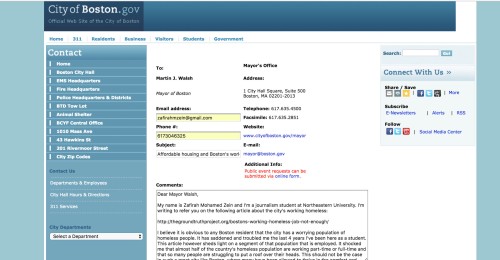In February this year, New York Times did something it had never done before, something in many ways pioneering in the paper’s coverage of race – a whole series of unpublished images of black history for the whole of Black History Month. Each day of the month, photos were published of famous celebrities and prominent figures in hip-hop and the ballpark, as well as ordinary people going about their daily lives, in a project that sought to uncover significant moments in black history that have been unfortunately left out. Out of more than five million photos and 300 000 negatives that had been buried in NYT archive, 54 made the cut, each revisiting a historical moment in American and black history, each telling the long untold stories that were very possibly deemed not newsworthy at that time. These were the photos that were taken but never made it to print or when they did, were taken out of the powerful context from which they emerged.
One prime example is that of Martin Luther King Jr., whose face and power is known to us all living outside of that period with portrait shots like the first photo.This portrait is the only photograph in the Unpublished Black History series that has been published and one that has been published many times.


However, little do we know, as readers the what, when, why and how this photo of such an iconic figure was taken. To many of us, it was simply a portrait of one of the most important men in history.
What the Unpublished Black History project reveals of this photograph was that it was shot during the summer of 1963 on a day when black protesters threw eggs at Dr. King as he arrived at a church in Harlem. The belief is that it was a response to his criticism of black nationalists earlier in the day, saying that those who called for a separate black state were “wrong.” That day itself, Dr. King was part of a round table discussion that was broadcast on NBC (second picture). The portrait was a crop of that original photo, an image that is now so familiar to us all yet so dissociated from the larger, intense events of the day. The isolation from context is not the only problem unveiled by this project. As much as the project revealed what was happening at significant moments, it also disclosed how much was missing from coverage of the African-american life. The collection is described as far from comprehensive, with many gaps in identity and information.
“You know, there are a number of reasons why photos doesn’t go — published. And the truth is, we won’t know the whole story behind them. But, you know, one of the things we discovered as we were digging through the archives is that, as powerful as the photos we’re showing to readers, as powerful as they are, what is almost as powerful is the photos that we cannot find.
The whole question of who was shot and who was not is a real one. And the photos that are missing, that’s a big question. And there are reasons why some of these people are not in our archives. And we didn’t have a whole huge staff of photographers at the time.
You know, the newspaper didn’t put a premium on images, like it does today. We were called the gray lady because we put a premium on words, lots of them. But we have also really got to be frank and honest and acknowledge that this was a time period when African-Americans were marginalized in society and in media.” – Rachel Swarns, NYT metro columnist and one of the founders of the Unpublished Black History project.
This is exactly one of the ethical issues in the coverage of race in America that led to my interest in writing about this topic. The idea that a significant amount of news about a major segment of the population was left out of the news cycle and hence buried under history raises many questions about how minority communities continue to be covered today, and what stories are told of, about and by them? How do news organizations choose which news to cover on stories about racial minorities? How much of race is infused in every day stories that are on the surface unrelated to it?
The Unpublished Black History project gives an introduction into how race has historically and controversially been covered by the Times, and how the paper is striving to critically reform the way it has covered race in the past. In 2015, the paper received backlash for ending its race and ethnicity beat which was run solely by Tanzania Vega, who was reassigned to the metro section covering a criminal courthouse in the Bronx. Then, executive editor Dean Baquet issued a statement saying that the paper believed race is a big story and that they would cover it aggressively.
A year later in April, Baquet stayed true to his words as the NYT expanded its coverage of race by enlisting a team of reporters across all departments to conceive and develop stories related to race. The Times National Editor Marc Lacey said that Baquet “didn’t want to do one project and then out. He wanted something that acknowledged that race is part of so much of what we cover and is infused in so many things.” The core team is made up of Damien Cave, John Eligon, Marc Lacey, Michael Luo, Haeyoun Park, Sona Patel, Rachel Swarns while “extended-family” staffers also contribute. They represent the national, metro, sports and culture staffs in addition to representatives from the graphics, social media, video, photography, digital design and magazine departments. It is a newsroom-wide collaborative effort that encourages Times reporters and readers to share personal experiences, ideas, questions and thought-provoking material that evaluates how race is experienced by a wide range of individuals. The idea is that a diversity of skills and life experiences are vital to race coverage. This philosophy and initiative towards race have materialized in the form of Race/Related, a weekly newsletter that promotes greater, deeper conversation and coverage of race.
I got in touch with John Eligon, Marc Lacey and Rachel Swarns, all part of the Race/Related team. Eligon, who has written many powerful and important stories on race, such as Affluent and Black, and Still Trapped by Segregation and When Police Don’t Live in the City They Serve passed me his email via Twitter, but has yet to respond to my email. I had planned to ask him the following questions to get his opinion on the Times’ new approach of covering race.
1. How has Race/Related changed overall NYT coverage of race in both print and online? What was crucially missing before and why do you think it took this long to reform the paper’s coverage?
2. Why is it so important to make sure race is being covered across all departments, beyond a single beat?
3. How has the readers’ response been to Race/Related and the invitation to tell their own stories? How has this shaped the stories NYT wants to tell?
4. What sort of stories have you sought to do as a journalist who has covered many issues related to race? What are the challenges you’ve faced reporting these stories?
5. What do you think will be the most significant impact this new coverage can have in the era of Trump?
Lacey was quoted in a Poynter article as saying that the newsletter now has 50,000 subscribers and a higher-than-average open rate, which means it’s receiving positive response. The newsletter is clearly very interactive with articles such as Police Body Cameras: What Do You See? whereby readers go through simulated interactions with police officers along with questions in a quiz that worked to provide moe clarity and understanding of the situations and issue at hand. Readers were invited to submit their responses and explain why they responded a certain way if the wanted to, which is an innovative way to engage the public on important and pressing conversations on race. This type of engagement with the public has set the newsletter and Times apart from other mainstream media outlets and undoubtedly generates attention to the issue of race in all sorts of news.
Another way in which Race/Related has opened itself up to the public is to invite readers to tell their stories. The section Share Your Stories about Race begins this way: Many people have said that Trump’s election “flipped a switch” and changed how they view and interact with friends, family members, neighbors and the world around them. We’re interested in finding out how YOU are responding to the election – whether you’re a Trump or Clinton voter.
Overall, I find this approach a really effective and interesting way of making the topic of race more visible and remain a steady part of public dialogue. Asking readers to share their own experiences also makes the stories more personal and connects readers to other readers, while eliminating various forms of ignorance that are not always addressed in traditional news articles. The Times can only widen and deepen its coverage with collaboration of not only reporters from a variety of departments but with its readers – the public – as well, whose lives are all pretty much affected by race in one way or another.
In my opinion, the Times’ reform of their coverage of race is headed in the right direction, one that serves to fill in the gaps of what was missing from their coverage before and one that will be even more enhanced by the experiences of its own staff and readership.







